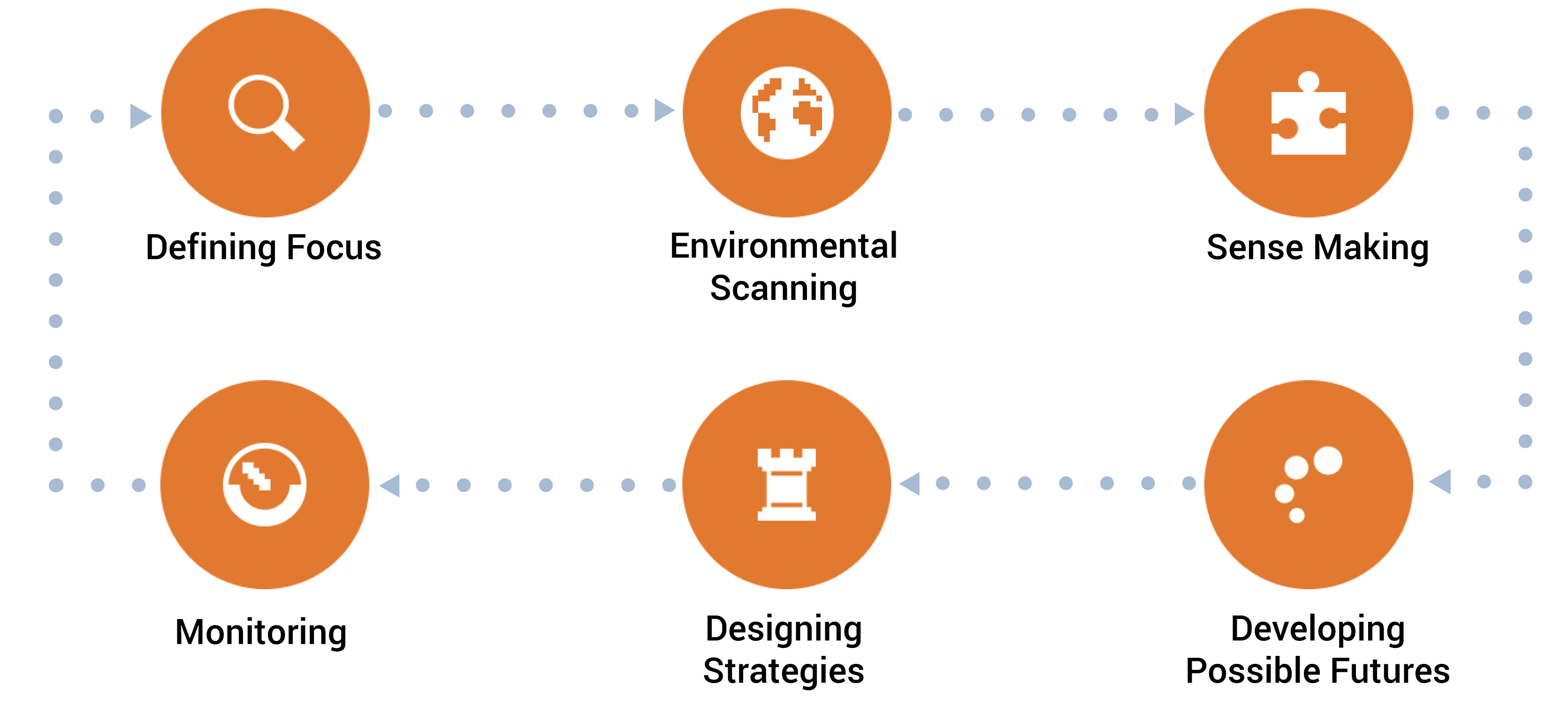Our Approach
Our Approach
The Centre for Strategic Futures (CSF) has developed its own set of foresight tools, to go beyond Scenario Planning to deal with emergent or sudden and discontinuous trends. Called “Scenario Planning Plus” (SP+), it retains Scenario Planning as its core, but taps on a broader suite of tools more suitable for the analysis of weak signals, and thinking about black swans and wild cards.
SP+ serves six key purposes:

Defining Focus

To establish the nature of a problem, tools such as complexity theorist Dave Snowden’s Cynefin Framework Problem Definition are used. This framework divides problems into five domains – simple, complicated, complex, chaotic and disorder – in order to categorise problems and find appropriate solutions based on the domain they belong to.
Environmental Scanning

To systematically examine the external environment to understand its nature and pace of change, and to identify potential challenges and opportunities. Tools include Emerging Issues Analysis, where we engage a wide range of thought leaders in various sectors to identify critical emerging issues.
Sense Making

To use raw information to piece together a comprehensive and comprehensible picture of an issue. For instance, we use Driving Forces Analysis and Prioritisation as a tool to examine how potential trigger events can alter existing trends, and then prioritise them based on their potential impact on stakeholders. For more information on how to use this tool, please see Driving Forces Cards in our Publications page. Another tool is the Strengths/ Weaknesses/ Opportunities/ Threats (SWOT) framework, used to systematically think about an issue from four key angles in order to identify which areas need the most attention.
Developing Possible Futures

To create narratives and models to understand plausible future states. Tools include Scenario Planning, where stories of plausible future scenarios are used to challenge assumptions and trigger thinking about long-term strategies, and Backcasting, which starts with defining a desired or feared future, and then working backwards to identify the policies or programmes that will connect the present to the future.
Designing Strategies

To craft strategies by taking into account insights into the future using tools such as War-Gaming, in which strategies and conflict simulations are explored within a fictional scenario game.
Monitoring

To track relevant indicators of anticipated futures or implemented strategies. One such tool is Early Warning Systems, used to analyse risks, monitor and warn of potential critical threats, and build a response capability to these threats.
Futures Conversations
In a series of conversations chaired by Mr Peter Ho, Senior Advisor to CSF, Futures Conversations bring together leaders across the Public Service. Issues discussed include latest trends, strategic issues and key developments and their relevant implications for Singapore. It hopes to hone officers’ instincts for futures work and bolster the anticipatory capabilities within and between government agencies.
Engaging the Wider Futures Community
The Centre for Strategic Futures (CSF) also engages the futures community through platforms like:
Strategic Futures Network
A quarterly meeting which convenes Deputy Secretary-level officers in the Singapore government to discuss emerging trends that may have interesting implications for Singapore
Sandbox
A bi-monthly meeting which gathers staff level officers involves in futures and strategic planning work from various parts of the Singapore government to share on-going projects, evaluate ideas and examine areas for potential collaboration
In addition, CSF works closely with several partners, including:
- Civil Service College
- Ministry of Trade and Industry’s Futures Group
- Ministry of Manpower’s Risk Management and Futures Group

